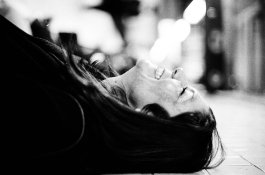Welcome to APUG/Photrio.
Nice shots! Your film does look a bit grainy to me, but this can largely be an effect of the scanning process. Know that HP5+ and Tri-X are not the finest grained films, especially if underexposed.
Would you suggest equipment and method for a (very patient) beginner?
There are some very good recommendations from Pentode above.
My recommendations for equipment:
Tank: Paterson Super System 4 universal tank. Get the one that takes includes two reels.Once you load the film into the tanks, all development can be done in room light/daylight.
A film cassette opener or film retriever to remove the film from the cassette in a darkened room.
A few measuring cups: doesn't need to be anything special (plastic, glass or stainless steel are all fine).
Clothes pins and wire coat hangers: hang the hangers on your shower rod in the bathroom and clip the processed (wet) film to the hanger and leave it to dry
Negative sleeves: Printfile archival storage page for negatives. They are 3-hole punched to fit into a standard binder.
Process chemicals:
Developer: A packet of Kodak D-76 or Ilford ID-11 (they are the same formula - a fine-grain developer which will give great results for a broad range of film and exposure conditions). Check the reference sheet of developing times for film from
Ilford or
Kodak. Both these documents specify how to agitate the film during development.
Stop bath: Any stop bath is fine, or you can dilute white store vinegar to 2% acetic acid. If you don't like the smell of vinegar, choose a stop bath which is citric acid based (aka odorless). Pour this into the tank after the developer and agitate for 30 seconds (or as long as the bottle suggests).
Fixer: Any is fine, I recommend Photographer's Formulary TF-4 or TF-5 for ease of use and long shelf life. follow the instructions on the bottle.
Wash the film for the time specified on the bottle/package of fixer.
Wetting agent: Any is fine, Kodak Photo-Flo and Ilford Ilfotol are both great. Be careful to not add too much, follow the directions on the bottle.
It's not too challenging, and all of the above can be had for ~$100.
Don't be tempted into trying a whole bunch of different developers, they will give results that are quite similar. If you want fine grain and can sacrifice a bit of sharpness, use D-76 at the stock concentration (specified on the packet of developer). If you want sharper images and will accept a bit more grain use D-76 diluted 1+3. A compromise between the two is a dilution of 1+1.
The largest determining factor of "the look" of a film is the film type and the amount of exposure. If underexposed, the film will show lots of grain. If you want a finer grained 400 speed emulsion, consider Ilford Delta 400 or Kodak Tmax 400 which are both great films. Of course, moving to a slower speed film will also show less grain. Film likes plenty of light, lots of people will overexpose negative film by 1/3 stop compared to box speed (e.g. EI 320 for Tri-X or HP5+) just to make sure there is good shadow detail. Of course this all depends on your metering technique as well.
Good luck, hope you find a satisfactory solution. Film is a ton of fun; I hope you will also find some enjoyment in the process.














